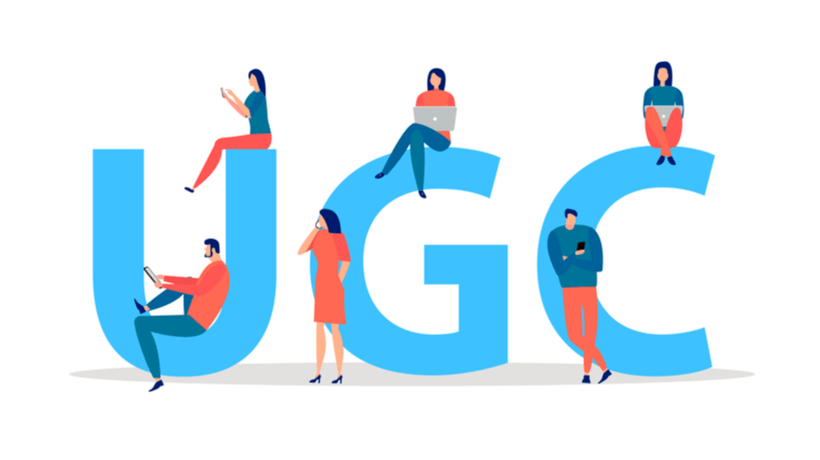How Can User-Generated Content Benefit Training
There are always new trends that aim to make training materials more interesting, and user-generated content is at the forefront as of late. A vast amount of content on the web is user-generated; from YouTube videos to customer reviews, people create and upload content online all the time since the dawn of the internet. However, can something as informal as a Pinterest infographic have a place in a structured corporate training plan? The answer is yes, and below, we'll see how learning material made by their peers can make employees stay focused on their training process.
Perks Of Adding User-Generated Content To Training
Increased Engagement
User-generated content in training is made by learners, not random people on the web. While it's used in combination with regular material, it can make a significant impact on engaging employees in their training. Whether they create their own content or learn from content made by their colleagues and other learners, they feel more invested since they know what they learn is relevant and applies to their level of expertise. Additionally, employees actively participate in the process, as they're the ones that create and share pieces of information in the form of articles, videos, images, quizzes, etc. They're motivated to continue contributing, and they take pride in knowing that their offers are beneficial for them and their peers. This approach allows them to express their creativity and helps them achieve optimal learning outcomes.
Socialization
User-generated material encourages informal learning and social learning. For example, employees can leverage the chatting tools on an online learning platform to share resources with their colleagues and ask for advice or support. Learning this way becomes simpler because it doesn't come from studying but from exchanging ideas and experiences. Social learning is a useful substitute for traditional learning since not everyone likes the idea of reading or viewing instructional material. This solution is especially beneficial for remote workers who don't have many chances to interact with their peers, especially during training. With incorporated user-generated content, they'll get to communicate more and view training not as something mandatory and boring but as a social activity.
Relatability
Employees are presented with real-life scenarios and examples of what they learn. This is because learners can share their experiences with the training, point out the tough areas, and offer solutions to others who will take on the same lessons. User-generated training content is authentic and allows employees to relate to it on a personal level, having a more clear idea of how to apply it to their own situations. Plus, employees will be more likely to trust their peers' opinions about content and, thus, prefer what they create. We can say that user-generated content adds a sense of credibility to the training material since it comes from people who've already had experience with the subject.
Diverse Perspectives
Everyone can contribute training content, no matter their cultural or other background. This provides an opportunity for organizations with a diverse workforce to offer a platform where everyone will share their knowledge and unique experiences. Traditional training content can be biased or come from a single source, which doesn't always make it inclusive. User-generated content, on the other hand, enriches the training experience with diverse points of view. It allows learners to access a wider range of information, approaches, and ideas.
How To Implement User-Generated Content
Find Suitable Topics
User-generated content doesn't go well with every topic. If your training program consists of case studies, real-life scenarios, or practical skills, then it's helpful to incorporate material created by other learners. To make certain that user-generated content will be meaningful, pinpoint the learning process areas that can benefit from employees' experiences, insights, and practical knowledge. At all times, the user-generated content should align with the training goals and the professional objectives of each employee.
Support The Process
Quality is key in successfully incorporating user-generated content, and this is why clear guidelines are important. To ensure consistency, set clear instructions on how the content should be formatted and structured. Similarly, instruct them on what the appropriate multimedia elements are. For example, can they use videos or animations? What are the technical requirements for images and infographics? To help them, you can show them templates and examples. Throughout the process, encourage employees to participate, and highlight the importance of creating content for the sake of their own training.
Leverage Technology
Your tech stack should include user-friendly and intuitive software. The programs should facilitate the content design process. Additionally, they need to make it easy for employees to share what they've made with their peers. Some features to look out for when choosing a platform are chatting tools, collaborative document editing, graphic design with templates, and image galleries. Make certain that the platforms have on-screen instructions for first-time users and options for support. Lastly, don't forget to choose a program that's accessible to all employees, regardless of their technical knowledge or device.
What Are The Challenges?
Quality Control
There needs to be careful content moderation to ensure that it's accurate and qualitative. Apart from the creation guidelines mentioned above, you should also establish a review process. During that, the content will be checked for legitimacy. You can assign moderators or purchase an AI system that will do this task automatically. However, you should encourage the learners to report any inaccurate or inappropriate content they find. This will also give them control over the material they have access to.
Privacy
At first, there may be reluctance from employees because they'll feel that the content isn't appropriate for training or that there are privacy issues. This is when you should highlight the importance of user-generated content and the value it adds to the training experience. Mention that participation isn't mandatory and that they can just observe the process at first before making a decision. Most importantly, you should communicate the privacy policy with your employees so that they'll know how you're using their user data.
Conclusion
If you want to stay ahead in the training landscape, then user-generated content can help you get there. Through peer-to-peer training materials, you can offer your employees a unique experience and access to meaningful and interesting content. All you have to do is follow the above tips and take a step forward to helping learners achieve their desired professional goals. Embracing this approach can help your organization create impactful training programs and unleash the full potential of employees.








